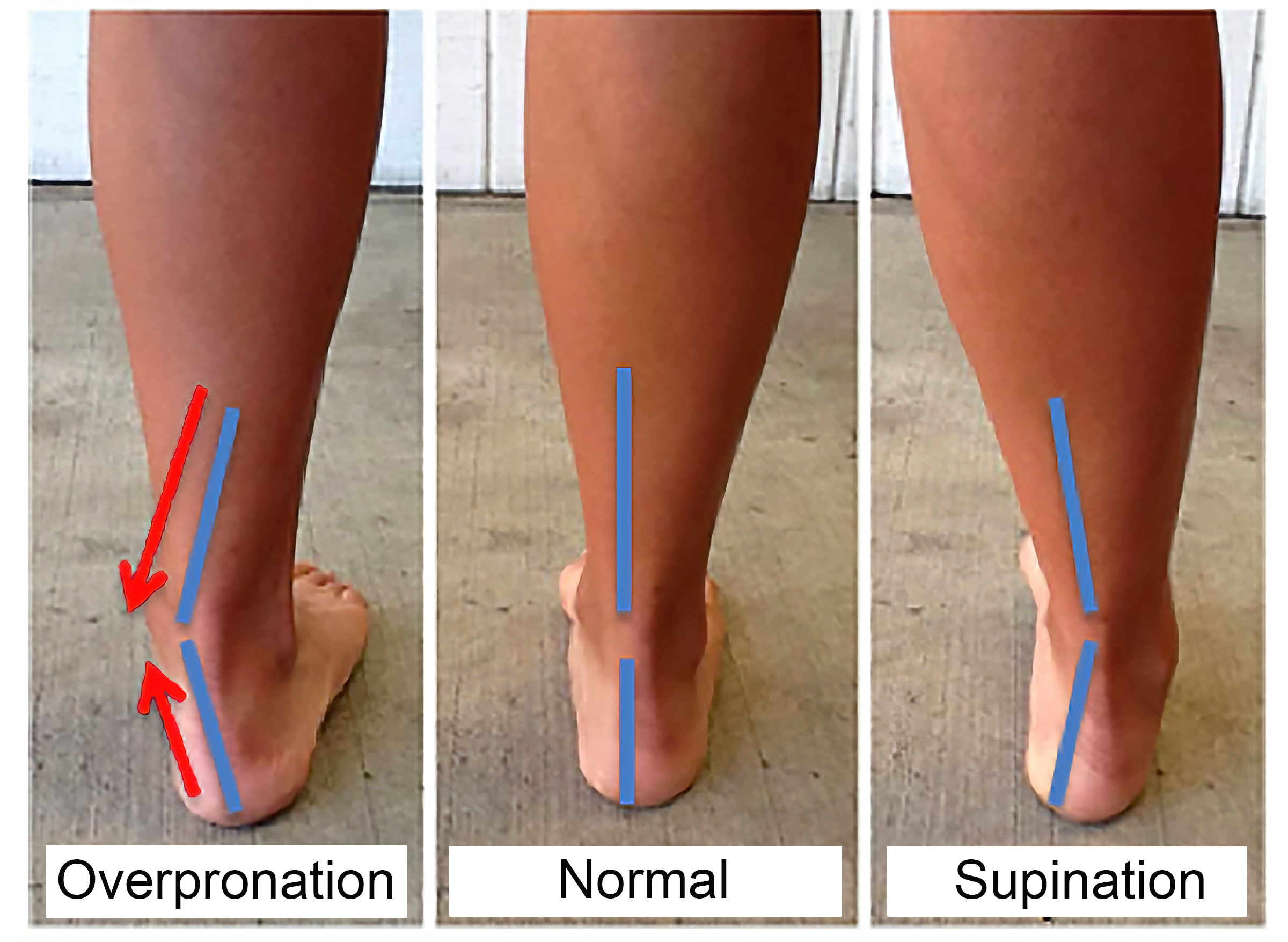Excellent mobility is key to a high quality, healthy life. Unfortunately, foot pain often limits our ability to do the activities we enjoy. Trouble with our feet can also extend to the knees and hips further exasperating the issue. Moderate foot pain can be caused from several factors, but shoes are one of the first investigated.
The natural motion of the foot when walking or running is pronation. Your gait can result in foot motion that has normal pronation, overpronation and supination. The opening illustration shows the difference. In normal pronation, your foot rolls naturally inward (~15%) allowing it to absorb the shock, and keep proper alignment between your ankles and legs. In overpronation, your foot rolls inward and downward excessively. Overpronation is found more often with people who have flat feet. In supination, the foot rolls excessively outward and is found more often in people with high, rigid arches that fail to flatten enough during their stride.
Overpronation or supination can result in stresses on the body, pain, and potentially greater risk of injuries. People who overpronate may have shin splints, pain in the outside knee, lower back or heels, Achilles tendonitis, or strained big and second toes. Supinators may have ankle pain or swelling, pain in outside knee, arch, heel or ball of foot, shin splints, and Achilles tendonitis. It is noted that some people overpronate or supinate with no ill effects. However, if you have pain, your shoe can potentially help to address the issue.
For normal pronation, it is best to select a neutral, comfortable shoe (including size) that provides good support and flexibility. Depending on overpronation severity, motion-controlled shoes, off-the-shelf insoles, or custom orthotics (made for your specific feet) can provide extra support and stiffness to guide the foot into the proper amount of pronation. For mild to moderate supination, people benefit most from flexible, neutral shoes that are well-cushioned. However, if supination is severe, custom orthotics may be needed.
In a study by Malisoux et al. of 372 recreational runners, the overall injury risk was 66% lower in participants who had received motion control shoes and had pronation. Despite these more recent findings, there is older research that found little benefit from motion control shoes. Hence it is best to experiment with what works best for you.
My Story: When I was suffering from moderate pain in the ball of my foot that wouldn’t heal for six months after hiking through the yellow mountains in China, my wife suggested I visit the local running store. I obtained a comfortable, neutral sneaker to match my foot pronation with good support and flexibility. Then with consistent, snug lacing preventing foot movement in the shoe, my pain gradually disappeared over 3-months. Two years and 2500+ miles later, my feet still feel great.

How to Determine Your Pronation
There are two excellent ways to determine your foot pronation if you have questions. First, visit a local shoe store specializing in athletic shoes or running and have an analysis completed. Often this is as simple as a trained professional watching you walk. In some instances, stores have an imaging machine to measure pressure points and the topography of the foot. This service is usually complimentary. While you are there, you can find a comfortable shoe that meets the criteria above. Most stores will honor competitive prices found on the internet. Secondly, you can visit a podiatrist (foot doctor).
Snug Lacing is Important Too
Lacing is another important aspect after finding the proper shoe. In our high paced society, slip on shoes are so convenient. However, motion of the foot within a shoe can lead to poor support, discomfort, and eventually pain. Before heading out for a walk or run, ensure your laces are snug to prevent foot movement within the shoe.
Frequency to Replace Your Shoes
Replacing your shoes frequency also keeps your feet healthy. I used to replace shoes once a year when they had holes. Now I estimate mileage (this is also often tracked by smart phones) and replace shoes every 450 – 550 miles. For me, this is every 4 months since I walk approximately 4 miles / day. Being pain free with improved performance is well worth the cost.
Image Credit: Ducky2315 (Own work) / CC-BY-SA-3.0 / Wikimedia Commons

